Hollywood in Prague, Part 2 – Time Travel with Mozart
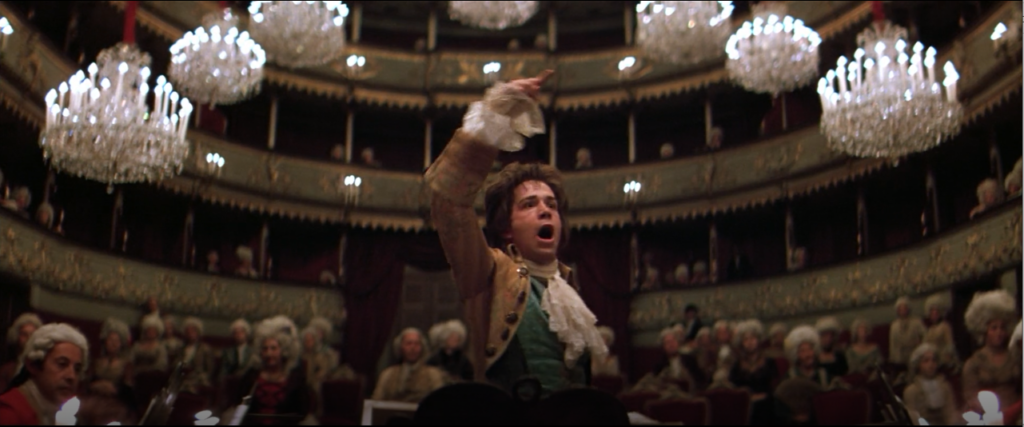
As discussed before, tourists are not the only people who noticed that Prague (and the Czech Republic in general) has considerable charm – world’s filmmakers have also gotten the memo. In the first installment of our Hollywood in Prague series we thought back to the first Mission: Impossible movie, this time we’ll change tack and look at some history. We said before that a blog post about this is inevitable, so here we go:
Amadeus (1984)
It’s the first film that comes to mind when historical Prague-based movies are mentioned, not only alphabetically and chronologically but also due to its impressive crop of awards (8 Oscars, 4 BAFTAs, 4 Golden Globes, yada, yada, yada…). As you probably know, the director, Milos Forman, emigrated into the United States from Czechoslovakia in 1968 so shooting in Prague, which he knew intimately, must have come as a matter of course. Well, not really! The Iron Curtain was still a thing and for an emigree to shoot a big Western film here was seen as a bit problematic – hence the constant police presence during the shoot.
So, why Prague?
Prague was one of 3 similar-looking European cities the filmmakers were trying to choose from, the two others being Vienna (the actual setting for most of the story) and Budapest (architectonically very similar to both Prague and Vienna). In the end, Prague won not because of the Forman connection but because Vienna was too expensive (probably still cheaper than building all the locations on a soundstage though) and, apparently, already too riddled with modernity, while Budapest just looked a bit too shabby and run-down. At least that was Forman’s story, and he was sticking to it.
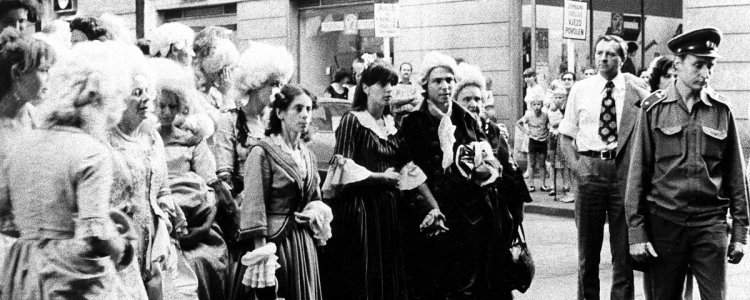
Costumed extras being watched by both uniformed and secret police; photo: Petr Našic
Anyway, now to our locations tour. Most of the spots we’re about to mention were used as exteriors in the film, there are some interior locations but only one of them is easily accessible (the Estates Theatre), so just think of this as a nice walking tour looking at buildings. The stops are mostly strewn around the Malá Strana neighbourhood (under the Castle) with some across the river in the Old Town. Since Prague is pretending to be Vienna here, you won’t find any major Prague landmarks on our list – neither the Castle, nor the Charles Bridge appear in the movie. We won’t go chronologically with how the sites appear on screen because that would just mean jumping back and forth, running up and down hills and generally really wishing teleportation was possible, but we’ll give you a spatially doable tour instead.
Malá Strana
You can start at the Wallenstein Garden (the garden complex currently belonging to the Senate building) not far from the Malostranská metro. This is where the outdoor concert for the Pope was held in the film, but the garden is worth a visit in its own right, which is why we’re including it even though it’s not exactly in a straight line with the other locations we’re about to visit. After you’ve enjoyed the gardens (Watch out for peacocks! One of those birds pooped on me once when I was crossing the gardens on my way to work. It was perched on a tree branch above one of the paths there, so eyes up – I kid you not.) you may either take a tram from Malostranská up to Pražský Hrad, or you can just walk to Malostranské náměstí and up Nerudova Street to the Hradčanské náměstí – the large, picturesque square in front of the Castle.

On the side directly opposite the Castle gate is the house used as Mozart’s residence. You can also see the housefronts (palacefronts?) along the north side of the square several times in the movie as various outdoors establishing shots. One more building on the square is Amadeus-noteworthy, and that is the monumental Archbishop’s Palace – also north side, a little closer to the Castle. This is where the Emperor’s Palace interiors were shot. Unfortunately, as it’s the official seat of the Archbishop of Prague, chances of getting inside to check them out are pretty slim. But now you know.
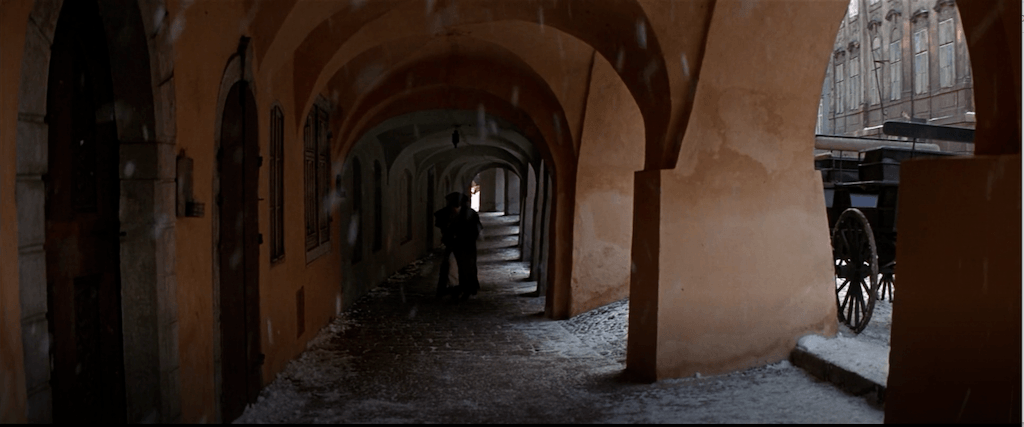
From Hradčany turn back downhill but don’t go through Nerudova, hug the southern wall of the Castle gardens instead and walk down the Castle Stairs (Zámecké schody). These give way to Thunovská street, the narrow part of which also appeared in the movie. As a bonus, when you cleared the narrowest part of the street, look left past the Churchill statue. What you’re looking at is the Thun Palace (currently British Embassy so, again, chances of getting in slim-to-none) where the actual Mozart apparently spent some time when in Prague.
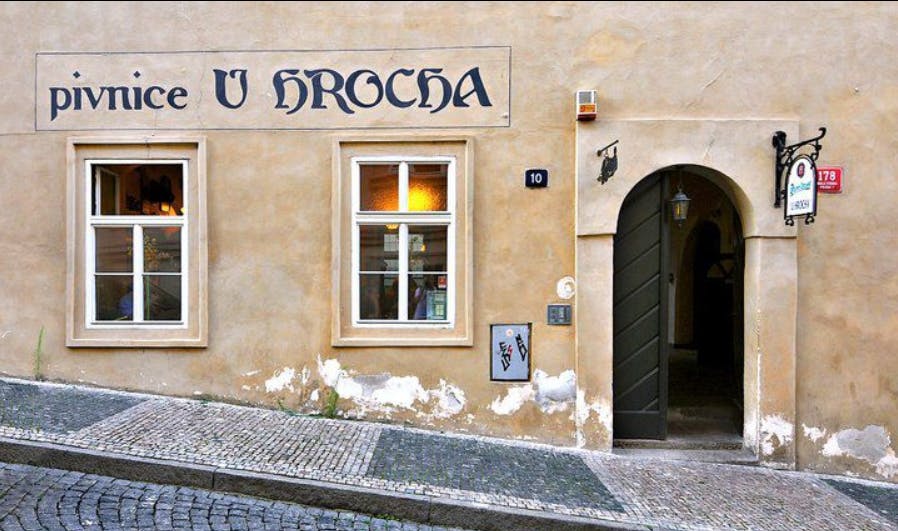
Continue down the hill (have a pint at U Hrocha – meaning The Hippo – on your left if you’re into an authentic Czech beer experience – it’s a tiny bar full of locals on first-name basis with the bartender who will look at you as if your ordering beer bothers him immensely – all that is part of the local colour) and turn right to Malostranské náměstí.
You’ll have to walk around the St. Nicholas church to find the passage connecting the square to the Tržiště street (also the street where you’ll find the US Embassy if that’s helpful). This tunnel-like passage, with its air of mystery, also appears in Amadeus several times. Take Tržiště downhill, cross Karmelitská and take Prokopská to Maltézské náměstí.
There you’ll find two other locations across the street from each other: the arched passageway seen in the film several times when someone is heading to Mozart’s house and the wig shop where he so happily tries on tons of wigs when he’s about to be received by the Emperor (this is, curiously, the Danish Embassy, so, again, you probably won’t be able to get in). Around the corner from Maltézské náměstí is Lázeňská 2 – the building belongs to the Maltese knights and it’s the place where Salieri attempts suicide at the very beginning of the movie. After you’ve ticked all that off you can head to and across the Charles Bridge because our remaining locations are in Old Town.
Old Town
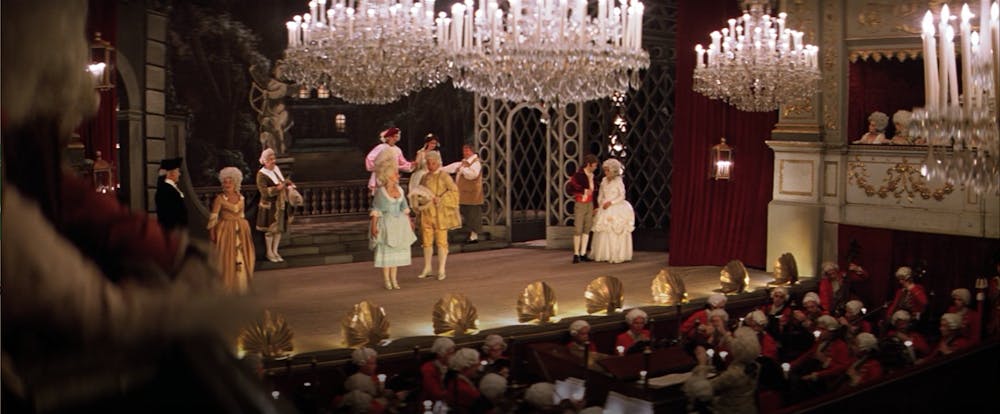
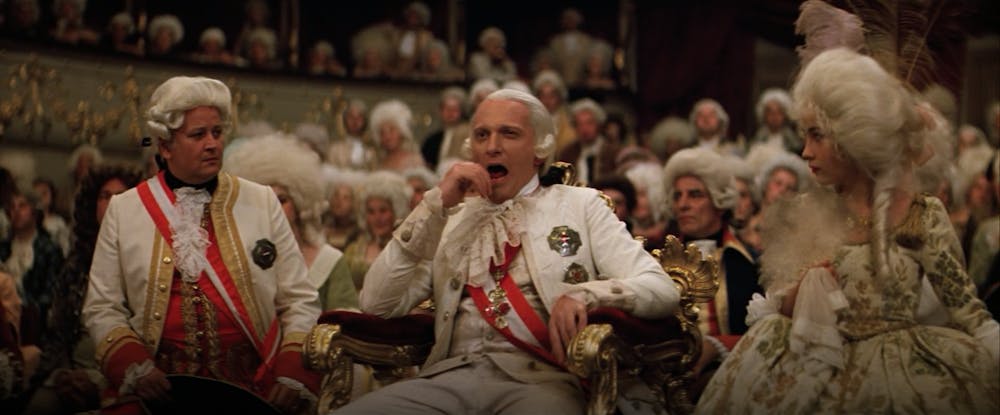
Once you fought your way through the throngs to the eastern bank of the river, continue straight ahead on Karlova Street until you hit Husova. Turn right and you’ll see a church a little further along the street. This is the St. Giles Church (Kostel svatého Jiljí) where, in the movie, Mozart’s wedding takes place. And yes, you may go inside, that is if you behave respectfully and all that, it’s a church. From here it’s just a short walk through beautiful but maze-like streets and alleys (yes, you’ll need your map) to the Estates Theatre at Ovocný trh, the last location on our tour.
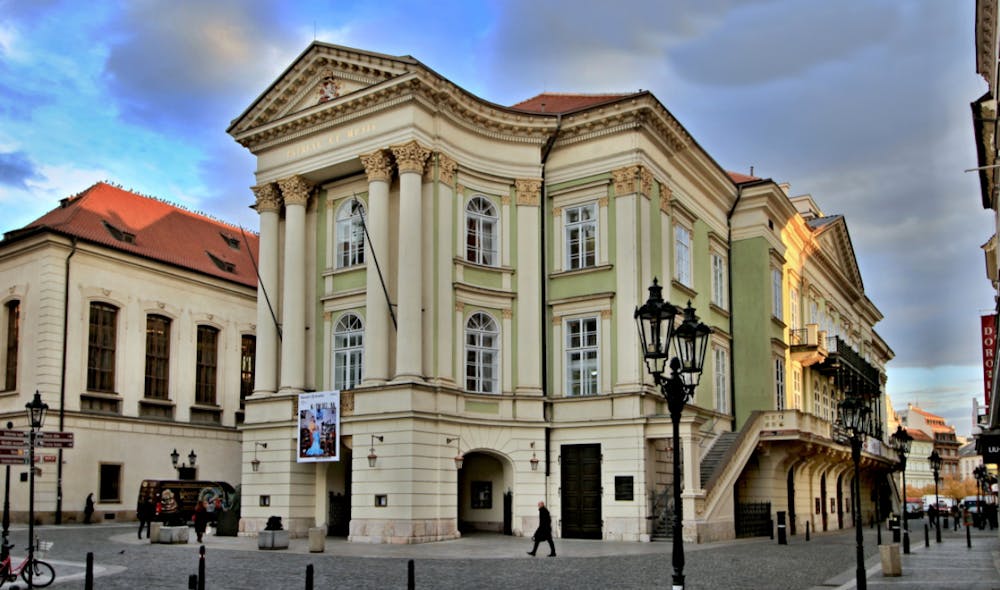
In Amadeus, it was used as the opera theatre where Mozart’s Seraglio, Marriage of Figaro and Don Giovanni are staged and where both Mozart and Salieri display their skills in front of the Emperor. The theatre is actually one of the oldest running theatres in Europe and it’s where Mozart’s Don Giovanni actually premiered – yes, here, in Prague, no whiny Vienna. If you’d like to see the theatre from the inside, they do guided tours, generally on weekends and public holidays, and yes, sometimes even in English.
Aaaand some bonus items!
As a bonus, here are a few locations that didn’t make it into our “as concise as possible” tour because they’re slightly out of the way. We still thought they deserve an honourable mention and, in case of those in Prague, a spot on our map with all the other sites. The one location which didn’t make it into the map is the Kroměříž Castle – the palace where Salieri meets Mozart – because it’s not actually in Prague but in, you guessed it, the town of Kroměříž.
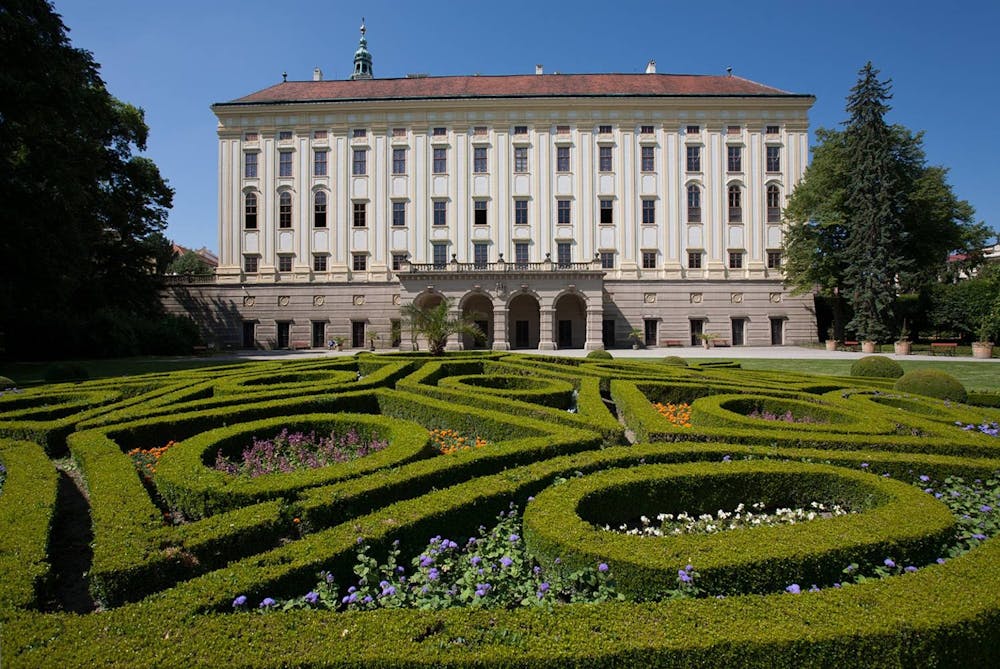
In the beginning of the film, Salieri is taken to a monastery/hospital where he’s supposed to recover and where, throughout the movie, he tells his story to a young priest. His room was a set built on a soundstage, but the exterior of the building is the Prague Invalidovna, an old decommissioned military building east of the centre. Around two thirds into the movie Salieri is discussing Mozart’s unfortunate living conditions with Baron Van Swieten at the Strahov monastery library – this place is so impressive it keeps popping up in different movies so you’ll hear of it again.
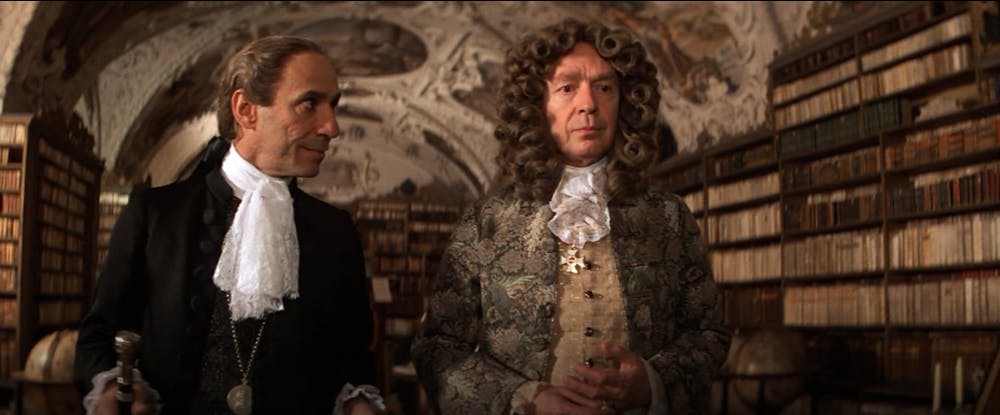
Salieri in Strahov Monastery library
And finally, the most mysterious spot of all…
After Mozart dies, his hearse leaves the city through the Leopold Gate – actually leading up to the Vyšehrad fortress south of the city centre (the entire Vyšehrad is very worth visiting), and his body is then dropped into a mass grave. The graveyard used for the film was the Bohnice Psychiatric Hospital cemetery, a very overgrown, strange and reportedly haunted place where thousands of the hospital’s patients were buried over the decades (the cemetery was in use since 1909). There is also some evidence, albeit definitely not conclusive, that this is the real final resting place of the assassin from Sarajevo, Gavrilo Princip, who killed the Archduke Franz Ferdinand d’Este and started WWI.

Now, this post was supposed to be a catch-all for major historical movies featuring Prague but clearly we were, once again, too loquacious. You’ll have to make do with Amadeus this time around and get the rest of your historical locations fix in a few weeks. Unless we decide to do action flicks instead, that’s for us to know and for you to find out!
May 11, 2022

